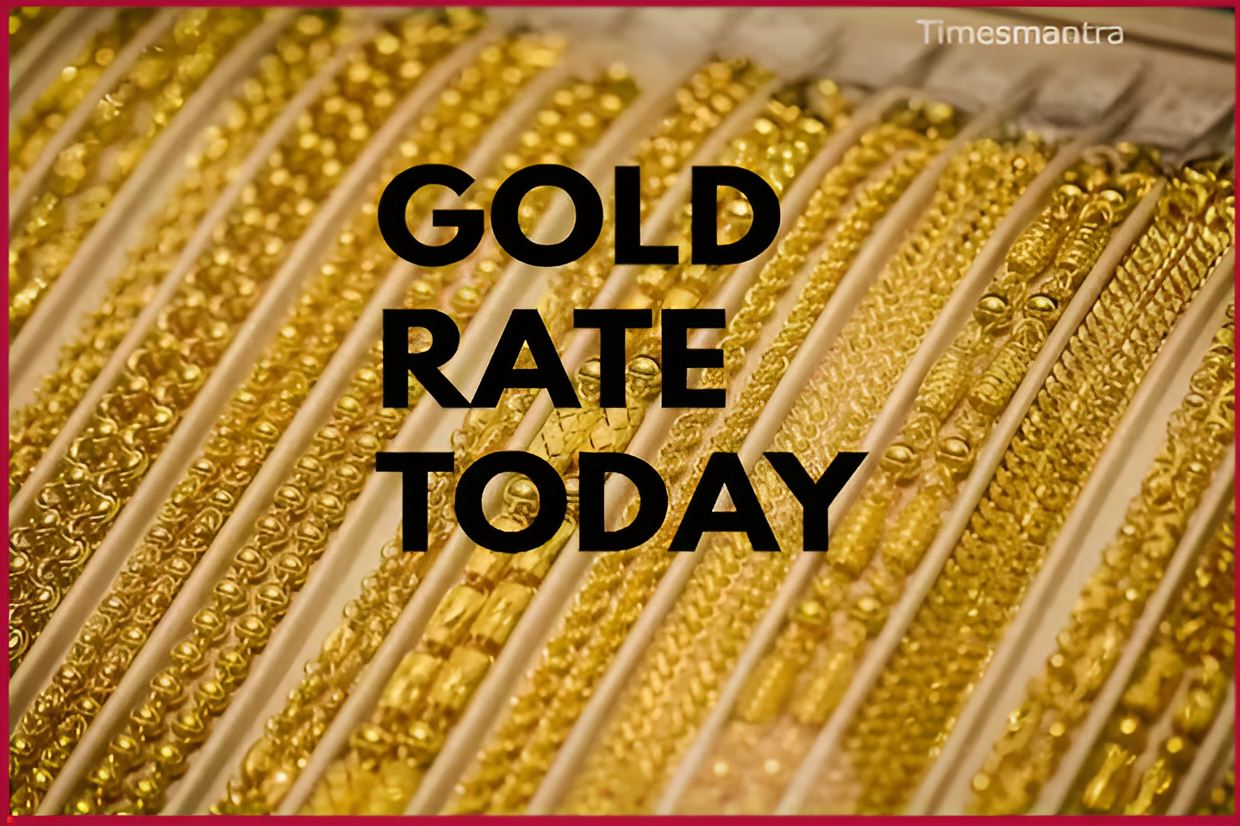India Gold Price Today: Rates Drop Across Major Cities – Aug 13, 2025
Gold prices across India experienced a notable decline on August 13, 2025, providing a potential window of opportunity for buyers. The precious metal, which has been on a strong upward trajectory for much of the year, saw its rates drop across major cities, with 24-carat gold and 22-carat gold reflecting the trend. This dip comes after a period of significant volatility, driven by a complex interplay of international and domestic factors.
According to various market sources and bullion associations, the price of 24-carat gold for 10 grams is at approximately ₹1,01,350, while 22-carat gold stands at around ₹92,900 for the same quantity. These rates represent a drop from the previous day’s closing figures and are being closely watched by both investors and consumers.
A Snapshot of Gold Rates in Major Cities
The decline in prices is not limited to a single region but is a nationwide phenomenon. Here’s a quick look at the indicative gold prices (per 10 grams) in some of India’s key urban centers as of August 13, 2025:
- Delhi: 24K gold is at approximately ₹1,01,500, and 22K gold is at ₹93,050.
- Mumbai: 24K gold is at approximately ₹1,01,350, and 22K gold is at ₹92,900.
- Chennai: 24K gold is at approximately ₹1,01,350, and 22K gold is at ₹92,900.
- Bengaluru: 24K gold is at approximately ₹1,01,350, and 22K gold is at ₹92,900.
- Kolkata: 24K gold is at approximately ₹1,01,350, and 22K gold is at ₹92,900.
- Hyderabad: 24K gold is at approximately ₹1,01,350, and 22K gold is at ₹92,900.
It is important to remember that these are indicative rates. The final price for consumers will also include local taxes, making charges, and other levies, which can vary from one jeweler to another.
What’s Driving the Price Fluctuation?
The price of gold in India is influenced by a combination of global and domestic factors. The current drop can be attributed to several key developments:
- Global Economic Sentiment: Gold often acts as a safe-haven asset, meaning its demand typically increases during times of economic or geopolitical uncertainty. When global markets show signs of stability, or when other asset classes, like equities, become more attractive, the demand for gold can soften, leading to a dip in prices. Recent data from the US, for instance, which indicated a slower-than-expected rise in inflation, has boosted expectations of a potential rate cut by the US Federal Reserve. This has led to a weaker US dollar, making gold cheaper for holders of other currencies and influencing its global price.
- US-India Tariff Tensions: The ongoing discussions and potential implementation of new tariffs by the US, particularly those that might impact Indian imports, have been a significant driver of gold price volatility. A depreciating Indian Rupee against the US Dollar can make imported gold more expensive for domestic buyers, pushing prices up. However, any easing of these tensions or market speculation can lead to a quick correction.
- Local Demand and Festival Season: While international factors are a major influence, local demand also plays a crucial role. India is one of the world’s largest consumers of gold, and demand typically peaks during festive seasons like Diwali and Akshaya Tritiya, as well as during the wedding season. A recent slowdown in physical gold demand, likely due to the previously high prices, could be a contributing factor to the current drop. The World Gold Council has noted that while global gold demand has been strong, demand in India has seen a decline in recent quarters due to the soaring prices.
- Central Bank Activities: Central banks, including the Reserve Bank of India, are significant players in the gold market. Their buying and selling activities can impact global gold prices. The trend of central banks consistently adding to their gold reserves has provided a floor to gold prices, but any shift in their strategy can introduce volatility.
Gold: A Storied Investment in India
Gold holds a unique and revered position in Indian culture and economy. It is not just a commodity but a symbol of wealth, prosperity, and security. For centuries, Indian households have invested in gold, viewing it as a reliable hedge against inflation and a store of value that can be passed down through generations.
This cultural significance is reflected in the consumption patterns. While a large portion of gold is used for jewelry, there is also a growing interest in investment-grade gold in forms like bars, coins, and digital gold. The government’s introduction of Sovereign Gold Bonds (SGBs) and the increasing popularity of Gold Exchange Traded Funds (ETFs) have made it easier for people to invest in the precious metal without the need for physical storage.
What Does the Future Hold?
Market analysts have a mixed outlook for gold prices in the coming days and weeks. While the current dip might be a short-term correction, the long-term forecast remains bullish. Factors like global economic uncertainty, geopolitical tensions, and the continued appeal of gold as a safe-haven asset are expected to provide support to prices.
Experts advise potential buyers to keep a close eye on international developments, including policy announcements from major central banks and any changes in global trade relations. For those looking to invest, buying on dips is often a recommended strategy. This period of price decline could be an opportune moment for consumers planning to make purchases for upcoming weddings or festive occasions to buy gold at a more favorable rate.
As with any investment, it is crucial to consult with financial advisors and stay informed about market trends. The gold market is dynamic, and while the current dip is a welcome change for buyers, its long-term trajectory is a function of a global economic landscape that is constantly in flux.
